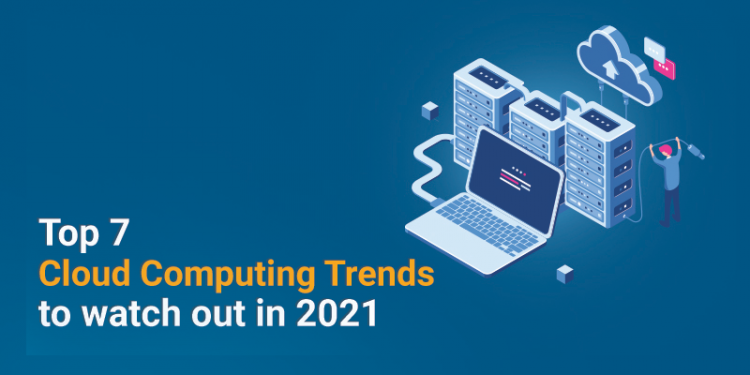Computing has progressed significantly. It began in the early days of computing when centralized programs could only operate on a single machine. Then came personal computing, which allowed users to decentralize apps and operate them locally. Cloud technology evolved after this, with applications and entire platforms operating on data centers. Each day, technology advances and improves. Computing is no exception. Check out these trends for 2021 and also discover how you might take advantage of them in the future.
Table of Contents
#1 Serverless Computing
Serverless Cloud Computing is a recent trend that benefits software developers in particular. CSPs are in charge of resource allocation rather than maintaining, updating, and scaling up data centers.
The advantage is that neither servers nor operating systems are required to be maintained. It’s also simple and quick to expand; it includes built stability and high availability, so there’s no spare capacity. It simply implies that you can only spend on what you are using. In 2021, there’ll be a significant movement away from traditional “server-based” cloud technology and toward serverless.
In 2021, expecting to see container use rise, and the Kubernetes vs. Docker conflict to the end will escalate. More on this can be learned from various Cloud Computing online courses available online.
#2 Edge Computing
Edge computing is a new cloud trend in which information and data are stored in localized data centers closest to the appliances that consume these. Rather than using a centralized cloud network, computing and management are stored automatically.
As conventional on-premise IT network providers like IBM, HP, and Dell strive to deliver strategies and technologies with flawless integrations but the reduced speed and improved security, edge networking is expected to gain popularity.
Edge computing evolves more significantly in our daily lives as IoT grows more widespread, and it will play an important role in the administration of IoT technology. Organizations will use Cloud Computing solutions and new cloud technologies such as AI and Edge to discover creative solutions for customer issues in 2021 and even beyond.
#3 Hybrid Cloud
A hybrid cloud is a fusion of public and private cloud services. The two clouds function in combination, allowing them to share computation and information. As a result, the consumer benefits from the ultimate experience.
A hybrid architecture provides a lot of adaptability by allowing confidential information to be moved to secure networks and general data is kept in public clouds. It’s also low-cost, has a little outage, and is safe, flexible, and expandable.
As a result, you should be aware that further cloud service providers will provide hybrid cloud services in 2021 and the future. Microsoft Azure, for example, offers Azure Stack, Azure Defender, and Azure Arc, among other hybrid cloud services and products.
#4 Multi-Cloud Approach
A multi-cloud approach is used by 93 per cent of all businesses. Companies can employ two or more distinct cloud services from different cloud providers using multi-cloud services. Every major cloud service provider, including Aws, Azure, IBM Cloud, Salesforce, and many others, chooses to use a secure method for all of their infrastructures. Their corporate strategy aims at providing all of a customer’s cloud storage and computing needs all under the rooftop.
#5 Virtual Cloud Desktops
The cloud will handle virtualized cloud desktops, delivering a firm’s full workplace setup to employees’ laptop or desktops displays. That’s also available on every end device from anywhere in the globe. The business’ IT administration can control and manage these PCs from either a remote centralized data center.
If a firm recruits more staff, for example, it has to expand its capacities. This is simple to accomplish utilizing virtual servers. It’s also safe to use. It’s all automatically backed up and stored in a safe cloud server. As almost anything is centralized, it is far more secure than storing all data on separate devices. It may also be easily restored if it is destroyed.
#6 Artificial Intelligence Collaboration
Artificial Intelligence (AI) has emerged as the embodiment of technological transformation. AI is expected to rise in the year and, with global sales for the AI sector, exceed $300 billion by 2024.
Artificial intelligence encompasses a broader range of innovations, such as chatbots, google apps, and digital assistants, and attempts to eliminate repetitive work.
As organizations utilize AI to simplify industrial operations and reduce manual activities, AI will grow increasingly significant in the workforce. Improved Artificial intelligence analysis can help businesses acquire a deeper understanding of business services and products and improve workflows for payroll management, budget forecasting, and adherence.
#7 Improvement in PAAS
Platform as a service is also expected to grow in popularity over time, as they are now used by the majority of businesses. Companies may utilize PaaS to get cloud-based development platforms from third-party suppliers. PaaS, which is accessible on both public and private cloud platforms, improves platform reliability, making it much easier to create apps, store information, and run tests.
Platforms as a service are anticipated to continue to grow unabated, boosting the prospects of all cloud suppliers. Other companies like Redhat, Oracle, and Vendita, in addition to the big three’s runaway serverless solutions, present more digitalization options, allowing for even more interconnection and multi-cloud interfaces.


















